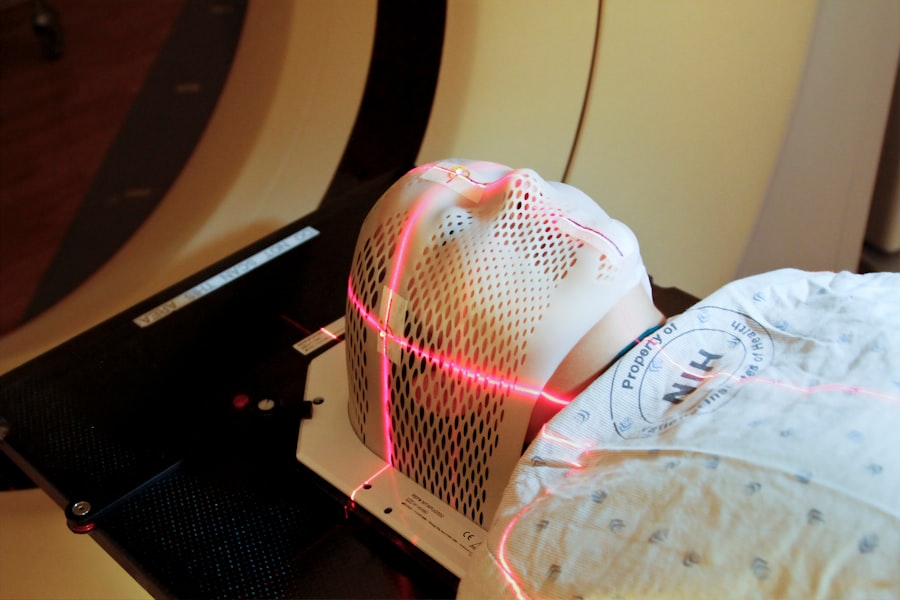Laser hair removal is a popular cosmetic procedure that uses a concentrated beam of light (laser) to remove unwanted hair. The laser targets the pigment in the hair follicles, heating them up and damaging the follicle to inhibit future hair growth. This process is effective for both small and large areas of the body, including the face, legs, arms, underarms, and bikini line.
The procedure is typically performed by a trained technician or a licensed medical professional in a clinic or spa setting. It is important to note that laser hair removal is not a one-time treatment; multiple sessions are required to achieve long-lasting results. The number of sessions needed varies depending on the individual’s hair type, skin color, and the area being treated.
Laser hair removal is generally considered safe when performed by a qualified professional. However, it is important to undergo a thorough consultation and skin assessment before starting the treatment to ensure that it is suitable for your skin type and hair color. It is also essential to follow pre- and post-treatment care instructions to minimize the risk of side effects and achieve optimal results.
Key Takeaways
- Laser hair removal uses concentrated light to target and destroy hair follicles, resulting in long-term hair reduction.
- The benefits of laser hair removal include long-lasting results, precision targeting, and reduced ingrown hairs.
- Common side effects of laser hair removal may include redness, swelling, and temporary discomfort, but these typically subside within a few days.
- Factors affecting the cost of laser hair removal include the size of the treatment area, the number of sessions required, and the expertise of the provider.
- Understanding the process of laser hair removal involves knowing how the laser targets the pigment in the hair follicle to disable future hair growth.
- Preparing for laser hair removal may involve avoiding sun exposure, shaving the treatment area, and discussing any medications or medical conditions with the provider.
- Aftercare and maintenance for laser hair removal may include avoiding sun exposure, moisturizing the treated area, and following any specific instructions provided by the provider.
The Benefits of Laser Hair Removal
There are several benefits to laser hair removal that make it a popular choice for individuals looking to reduce or eliminate unwanted hair. One of the main advantages is the long-term reduction in hair growth. Unlike shaving or waxing, which only provide temporary results, laser hair removal can lead to permanent hair reduction after completing the recommended number of sessions.
Another benefit of laser hair removal is the precision it offers. The laser can target coarse, dark hairs while leaving the surrounding skin undamaged. This makes it an ideal option for individuals with dark hair and light skin. Additionally, the procedure is relatively quick, with small areas such as the upper lip taking only a few minutes, and larger areas like the legs or back taking about an hour.
Laser hair removal also helps to prevent ingrown hairs, which are common with other hair removal methods such as shaving and waxing. By targeting the hair follicle, laser hair removal reduces the likelihood of hairs becoming trapped beneath the skin and causing irritation. Overall, the convenience, long-term results, and reduction in ingrown hairs make laser hair removal an attractive option for many individuals seeking a more permanent solution to unwanted hair.
Common Side Effects of Laser Hair Removal
While laser hair removal is generally safe and effective, there are some common side effects that individuals may experience during or after treatment. These side effects are usually temporary and can be managed with proper care and follow-up instructions from the treatment provider.
One of the most common side effects of laser hair removal is skin irritation. This may manifest as redness, swelling, or discomfort in the treated area. These symptoms typically subside within a few hours to a few days after treatment. In some cases, individuals may also experience temporary pigment changes in the skin, such as darkening or lightening of the treated area. These changes usually resolve on their own over time.
Another potential side effect of laser hair removal is the risk of burns or blisters. This can occur if the laser is not properly calibrated for an individual’s skin type and hair color, or if the treatment area is not adequately cooled during the procedure. It is important to choose a qualified and experienced provider to minimize the risk of burns and ensure that the treatment is tailored to your specific needs.
In rare cases, individuals may also experience scarring or crusting in the treated area. This is more common in individuals with darker skin tones or those who have undergone improper treatment. To minimize the risk of these side effects, it is crucial to undergo a thorough consultation and follow all pre- and post-treatment care instructions provided by the treatment provider.
Factors Affecting the Cost of Laser Hair Removal
| Factors | Description |
|---|---|
| Area of treatment | The size of the area being treated affects the cost of laser hair removal. |
| Skin and hair color | Darker skin and lighter hair may require more sessions, impacting the cost. |
| Number of sessions | The number of sessions needed for effective hair removal affects the overall cost. |
| Location | The geographical location of the treatment facility can impact the cost. |
| Experience of the provider | More experienced providers may charge higher fees for their services. |
The cost of laser hair removal can vary widely depending on several factors. One of the main factors that influence the cost is the size of the treatment area. Larger areas such as the legs or back will generally cost more than smaller areas like the upper lip or underarms. The number of sessions required for optimal results also affects the overall cost, as more sessions will incur higher expenses.
Another factor that impacts the cost of laser hair removal is the geographic location of the treatment facility. Prices may vary based on the region, with urban areas typically having higher costs compared to rural areas. Additionally, the reputation and expertise of the treatment provider can influence pricing, as more experienced professionals may charge higher fees for their services.
The type of laser technology used for the treatment can also affect the cost. Advanced laser systems that offer faster treatment times and more effective results may come with a higher price tag compared to older or less advanced technology. It is important to discuss the specific type of laser being used and its benefits with the treatment provider before undergoing the procedure.
Finally, individual factors such as skin type, hair color, and hair density can impact the cost of laser hair removal. Individuals with darker skin tones or lighter hair colors may require more specialized treatment techniques, which can affect pricing. It is essential to undergo a thorough consultation to determine a personalized treatment plan and associated costs before committing to laser hair removal.
Understanding the Process of Laser Hair Removal
The process of laser hair removal involves several key steps to ensure safe and effective treatment. The first step is an initial consultation with a qualified treatment provider to assess your skin type, hair color, medical history, and treatment goals. During this consultation, the provider will determine if you are a suitable candidate for laser hair removal and develop a personalized treatment plan based on your individual needs.
Before each treatment session, it is important to prepare the treatment area by shaving any visible hair. This allows the laser to target the hair follicles beneath the skin without interference from surface hair. The treatment provider will then adjust the laser settings based on your skin type and hair color to ensure optimal results while minimizing the risk of side effects.
During the actual treatment session, you will be given protective eyewear to shield your eyes from the laser light. The provider will then use a handheld device to deliver short pulses of laser energy to the treatment area. You may experience a mild stinging or snapping sensation during this process, but most individuals find it tolerable without the need for anesthesia.
After each session, it is important to follow any post-treatment care instructions provided by the treatment provider. This may include avoiding sun exposure, using gentle skincare products, and avoiding activities that could irritate the treated area. Following these instructions will help minimize side effects and promote optimal results from laser hair removal.
Preparing for Laser Hair Removal

Preparing for laser hair removal involves several key steps to ensure that you achieve the best possible results from your treatment. One important aspect of preparation is avoiding sun exposure in the weeks leading up to your treatment sessions. Sun exposure can make your skin more sensitive to the laser and increase the risk of side effects such as burns or pigment changes.
It is also important to avoid other hair removal methods such as waxing or plucking in the weeks before your laser hair removal sessions. These methods can disrupt the hair follicles and make it more difficult for the laser to target them effectively. Shaving is typically recommended as an alternative method for maintaining smooth skin between treatments.
Before each session, it is important to communicate any changes in your medical history or medications with your treatment provider. Certain medications or medical conditions may affect your eligibility for laser hair removal or require adjustments to your treatment plan. Being transparent about these factors will help ensure safe and effective treatment.
Finally, it is essential to follow any pre-treatment instructions provided by your treatment provider. This may include avoiding certain skincare products or medications that could increase your risk of side effects during treatment. By following these preparation guidelines, you can maximize the effectiveness of your laser hair removal sessions and minimize potential complications.
Aftercare and Maintenance for Laser Hair Removal
After completing your laser hair removal sessions, it is important to follow specific aftercare instructions to promote optimal results and minimize side effects. One key aspect of aftercare is avoiding sun exposure in the treated areas for several weeks following each session. Sun exposure can increase your risk of pigment changes and other side effects, so it is important to protect your skin with sunscreen and protective clothing.
It is also important to avoid other hair removal methods such as waxing or plucking in between your laser hair removal sessions. These methods can disrupt the hair follicles and interfere with the effectiveness of your treatments. Shaving is typically recommended as an alternative method for maintaining smooth skin while undergoing laser hair removal.
In some cases, your treatment provider may recommend using gentle skincare products or moisturizers to soothe any temporary skin irritation following your sessions. It is important to follow these recommendations and avoid using harsh products that could further irritate your skin.
Once you have completed your recommended number of sessions, you may need occasional maintenance treatments to address any remaining hairs that were not effectively targeted during your initial sessions. Your treatment provider can advise you on a maintenance schedule based on your individual needs and goals.
In conclusion, laser hair removal offers a long-term solution for reducing unwanted hair growth on various areas of the body. By understanding the basics of this procedure, including its benefits, potential side effects, cost factors, process, preparation, and aftercare, individuals can make informed decisions about whether laser hair removal is right for them. It is essential to consult with a qualified treatment provider to develop a personalized treatment plan that addresses individual needs and ensures safe and effective results from this popular cosmetic procedure.
Looking to learn more about laser hair removal? Check out this informative article on the benefits, side effects, and cost of laser hair removal at Inlaserhairremoval.com. Whether you’re curious about the potential risks and safety considerations (inlaserhairremoval.com/laser-hair-removal-risks-and-safety), how sun damage affects the treatment areas (inlaserhairremoval.com/how-does-sun-damage-affect-where-i-can-get-laser-hair-removal), or the overall cost in Texas, this article has got you covered.
FAQs
What is laser hair removal?
Laser hair removal is a cosmetic procedure that uses a concentrated beam of light (laser) to remove unwanted hair. The laser targets the pigment in the hair follicles, damaging them and inhibiting future hair growth.
What are the benefits of laser hair removal?
Some of the benefits of laser hair removal include long-lasting results, precision in targeting specific areas, and reduced ingrown hairs compared to other hair removal methods. It can also save time and money in the long run by reducing the need for regular shaving or waxing.
What are the potential side effects of laser hair removal?
Common side effects of laser hair removal may include temporary redness, swelling, and discomfort in the treated area. In rare cases, there may be changes in skin pigmentation, blistering, or scarring. It is important to consult with a qualified professional to minimize the risk of side effects.
What is the cost of laser hair removal?
The cost of laser hair removal can vary depending on factors such as the size of the treatment area, the number of sessions required, and the geographic location of the treatment facility. On average, the cost per session can range from $200 to $500. Multiple sessions are usually required to achieve optimal results.





